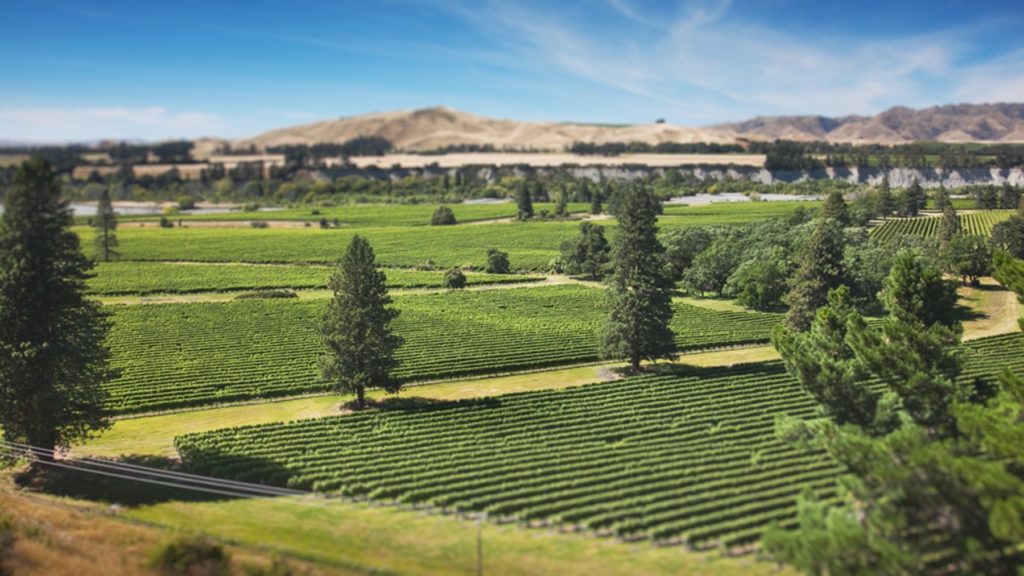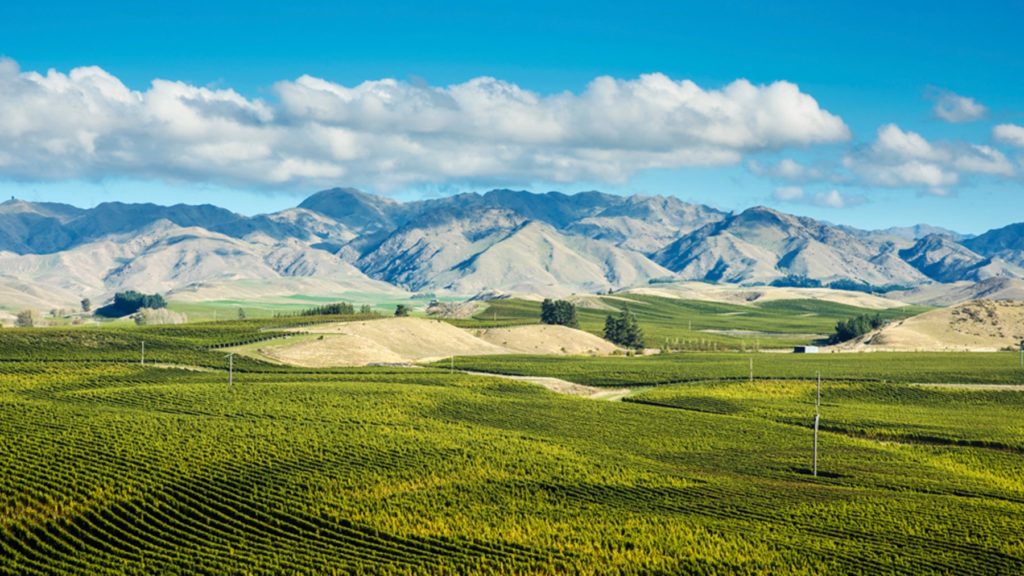It is no coincidence that Marlborough is the Mecca of New World Sauvignon Blanc and the heartland of New Zealand’s wine production. At the northeastern tip of the South Island it is sheltered from all the major and most extreme climatic influences, and instead has a sunny but fresh maritime climate – ideal for Sauvignon Blanc.
Marlborough Sauvignon Blanc puts itself on the map – and conquers
I can’t think of many other wine regions that have so firmly made themselves known around the world for one style of wine with quite the accelerated pace that Marlborough has. When you think of how well-known and well-loved Marlborough Sauvignon Blanc is, it is almost unbelievable that just 30 years ago it barely existed.
However today there are a whopping great 19,000 hectares of Sauvignon Blanc planted alone in Marlborough. Only France can beat New Zealand in Sauvignon Blanc plantations – and they’ve been making it for hundreds of years.
Marlborough’s Sauvignon Blanc became all the rage precisely because it was so different to France’s more austere styles of Sauvignon Blanc. The Maori call Marlborough, ‘kei puta te wairau’, meaning ‘the place with the hole in the cloud’, and that sunny fruit is expressive in the glass: passionfruit, grapefruit, mango and citrus zest. The incredibly sunny weather of Marlborough in combination with cool maritime climate helps the region produce bright and aromatic Sauvignon Blanc wines with a racy acidity and freshness. It became a bestseller overnight, and the region duly exploded.

Sauvignon Blanc as far as the eye can see (NZwine.com)
Marlborough: A modern world wine Mecca
When you drive through Marlborough you realise this is a privileged position – there is the coast to the east and mountain ranges to the north, west and south. You also realise that this must be one of the most concentrated vineyard regions in the world with vines in every direction as far as the eye can see. The valley has been planted to about 85% of its capacity, and it won’t take long for the final dots to be joined.
With such a dense vine population, and such a sparse human population, there are few other options than to machine harvest the Sauvignon Blanc. I’ve never visited a wine region where winemakers are quite so positive about machine harvesting and, in fact, extol its virtues for making top Sauvignon Blanc. The science behind winemakers’ enthusiasm is that machine harvesting increases the thiols in Sauvignon Blanc (there are 10 times more thiols in machine-picked Sauvignon Blanc than hand-picked Sauvignon Blanc) which, when carefully preserved, gives the wine those elevated grapefruit and passionfruit aromas.

Most Marlborough Sauvignon Blanc is machine harvested (NZwine.com)
Arguably you could say that in recent years Marlborough Sauvignon Blanc has swung too far to one side of the flavour pendulum – focusing on exuberant aromatics at the cost of other wine qualities (such as texture and balance). However, the pendulum appears to be swinging back as many of Marlborough’s winemakers today are refocusing on making wines with more restraint, more texture and more elegance – while still delivering those trademark tropical fruit aromatics.
I tasted some excellent examples of more restrained, geekier, styles of Sauvignon Blanc in Marlborough (which, interestingly enough, were often handpicked). There is definitely a diversity of Sauvignon Blanc in Marlborough today and as you move up the price range, you’ll often find wines that are less aromatically exuberant (or obvious) and more complex and engaging in the palate.
Alternative varieties in Marlborough
There is, of course, life beyond Sauvignon Blanc in Marlborough. And, in fact, there always has been. When the region was first planted by the pioneers in the 70s and 80s, they would plant just about everything in order to see what stuck. The runaway success of Sauvignon Blanc overshadowed all the other grape varieties, but Marlborough is a region capable of producing other interesting wines too. Pinot Noir, Pinot Gris, Chardonnay, Albariño and great sparkling wines to mention just a few…
It is here, in the ‘alternative varieties’ section, where you actually find some really great value wines in Marlborough. They don’t have the same market swagger as ‘Marlborough Sauvignon Blanc’ and actually require a more hands-on winemaking approach than Sauvignon Blanc. You get great value in the attention that the winemaker is paying to the wines, and great value because the market isn’t paying enough attention to them.
What makes Marlborough an exciting wine region today
‘Alternative varieties’, as they refer to them in Marlborough, will likely remain on the peripheries for the near future. If you find these wines, buy them and try them. But the trend that I think is more likely to reach its way to your glass is the premiumisation of Marlborough Sauvignon Blanc.
It is an exciting task ahead of winemakers in Marlborough: to make Marlborough Sauvignon Blanc not just a commodity but a world class wine that can break that ceiling of £20 a bottle. Who will be the first person to make that hole in the cloud is the question, but I have no doubt that Marlborough Sauvignon Blanc has the wings to fly closer to the sun without melting.

Who will break that ceiling? (NZwine.com)
More on Marlborough Sauvignon Blanc & Marlborough wine region:
- Marlborough wine region guide, fast facts & terroir essentials
- Marlborough sub-region interview with winemaker Clive Jones
- Cloudy Bay: building an icon
- Tohu & Awatere Valley
Images owned by NZwinegrowers

